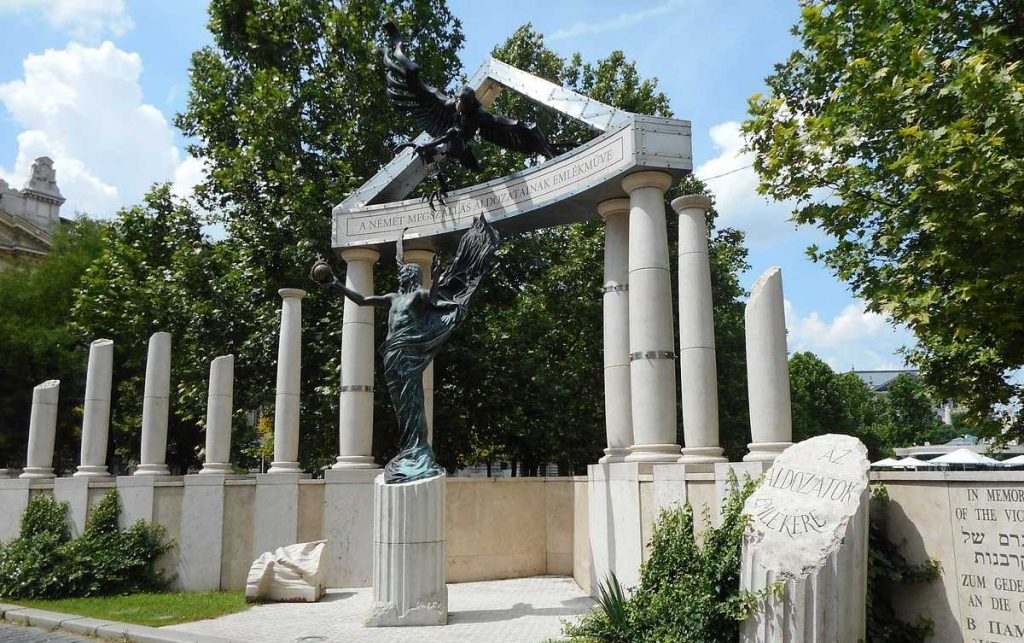Memorial to the Victims of the German Invasion
Introduction
Pay homage to the lives affected by the tragic events of the German invasion at the Memorial to the Victims of the German Invasion. Nestled in Budapest, this solemn monument is a reminder of the hardships endured during a pivotal moment in history. The Memorial to the Victims of the German Invasion isn’t just a monument; it’s a testament to the human spirit and the power of remembrance, fostering a deeper understanding of the past.
Historical Context
The German Invasion of Hungary
The German invasion of Hungary began on March 19, 1944, during World War II. This occupation marked a devastating period for Hungary, leading to widespread suffering, particularly for the Jewish community. The invasion resulted in the deportation of hundreds of thousands of Hungarian Jews to concentration camps, as well as severe hardships for the general population under Nazi control.
Significance of the Memorial
The Memorial to the Victims of the German Invasion was erected to honor the resilience and sacrifices of those who suffered during this dark chapter in Hungary’s history. It symbolizes the country’s commitment to remembering and learning from the past, ensuring that the atrocities committed are never forgotten.
Design and Symbolism
Monument Structure
The monument is designed to evoke deep reflection and emotion. It features a large bronze eagle, symbolizing Nazi Germany, descending upon an innocent and vulnerable archangel Gabriel, representing Hungary. The dramatic and imposing imagery captures the sudden and violent nature of the invasion and the vulnerability of those caught in its path.
Symbolic Elements
Every element of the monument holds symbolic significance. The archangel Gabriel clutches an orb, symbolizing innocence and purity, contrasting sharply with the menacing eagle. Around the monument, visitors will find inscriptions and plaques that recount the historical events and honor the memory of the victims.
A Place of Reflection
Honoring Resilience and Sacrifice
The Memorial to the Victims of the German Invasion is not only a tribute to those who lost their lives but also a recognition of the resilience and courage of the survivors. It honors the strength of communities that endured immense suffering and the solidarity that helped them withstand such adversity.
Encouraging Unity and Understanding
The monument powerfully reminds us of the importance of unity and empathy in the face of historical trauma. By commemorating the past, the memorial aims to promote a sense of shared humanity and foster a commitment to preventing such tragedies in the future.
Visitor Experience
Immersive Reflection
Visitors to the memorial are encouraged to reflect on the historical events and their impact. The solemn and contemplative atmosphere allows individuals to connect with the past, fostering a deeper understanding of the experiences and sacrifices of those who lived through the German invasion.
Educational Insights
The memorial includes informational plaques and guided tours that offer educational insights into the historical context of the German invasion. These resources help visitors understand the events and the monument’s significance, enhancing the overall experience.
Community Engagement
Throughout the year, the memorial hosts various commemorative events and ceremonies. These gatherings provide opportunities for community engagement, allowing individuals to come together to honor the victims, share stories, and reflect on the lessons of history.
Practical Information
Location and Accessibility
The Memorial to the Victims of the German Invasion is located in Budapest Szabadság Square (Liberty Square). The square is centrally located and easily accessible by public transportation, including buses, trams, and the metro. Its central location makes it a convenient destination for both locals and tourists.
Visiting Hours
The memorial is accessible year-round, with no specific visiting hours. Visitors can explore the site at their own pace, allowing for flexible and personal engagement with the monument.
Nearby Attractions
Szabadság Square is home to several other significant landmarks, including the Hungarian Parliament Building and the U.S. Embassy. Visitors can easily incorporate a visit to the memorial into a broader exploration of Budapest’s historical and cultural sites.
Conclusion
The Memorial to the Victims of the German Invasion in Budapest is a powerful tribute to the resilience and sacrifice of those who suffered during the Nazi occupation. Whether you’re drawn to history, driven by empathy, or seeking a moment of reflection, this memorial promises an immersive experience that fosters a deeper understanding of the past. By honoring the memories of the victims and highlighting the importance of unity and empathy, the monument serves as a poignant reminder of the enduring human spirit.
